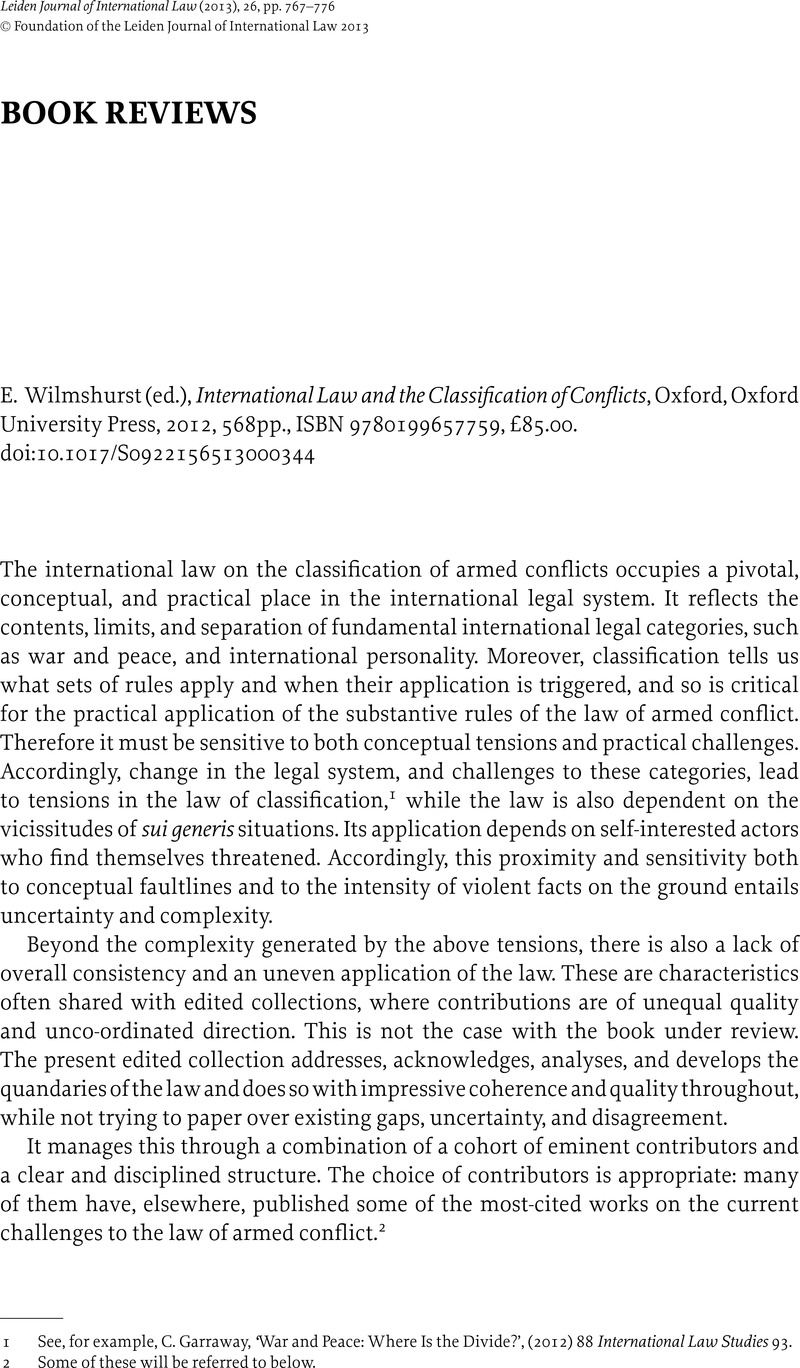No CrossRef data available.
Published online by Cambridge University Press: 31 July 2013

1 See, for example, Garraway, C., ‘War and Peace: Where Is the Divide?’, (2012) 88 International Law Studies 93Google Scholar.
2 Some of these will be referred to below.
3 Roberts, A., ‘Land Warfare: From Hague to Nuremberg’, in Howard, M.et al., The Laws of War: Constraints on Warfare in the Western World (1994), 117Google Scholar.
4 See Chapter 13 (The War(?) against Al-Qaeda), as well as Chapter 15 (Conclusions), making the general point.
5 An important example being the ‘Memorandum for the President; Subject: Decision re Application of the Geneva Convention on Prisoners of War to the Conflict with al Qaeda and the Taliban’, 25 January 2002, by Alberto Gonzales, Counsel to the US President.
6 One of the contributors has, elsewhere, used insights from the discipline of geography. See Arimatsu, L., ‘Territory, Boundaries and the Law of Armed Conflict’, (2009) 12 Yearbook of International Humanitarian Law 157CrossRefGoogle Scholar.
7 At 73, emphasis on the original, although it should be noted that the term ‘territorial’ plays an equally emphatic role in this sentence.
8 See, e.g., Arimatsu at 162 and Lubell at 433. These authors have developed this analysis elsewhere. See Arimatsu, supra note 6; and N. Lubell, Extraterritorial Use of Force against Non-State Actors (2010).
9 As set out in Ministry of Defence (Development, Concepts and Doctrine Centre), ‘Global Strategic Trends – Out to 2040’ (2010).
10 An area in which the author of the chapter is an eminent authority. See especially M. Schmitt (general editor), Tallinn Manual on the International Law applicable to Cyber Warfare (2013).
To send this article to your Kindle, first ensure no-reply@cambridge.org is added to your Approved Personal Document E-mail List under your Personal Document Settings on the Manage Your Content and Devices page of your Amazon account. Then enter the ‘name’ part of your Kindle email address below. Find out more about sending to your Kindle. Find out more about saving to your Kindle.
Note you can select to save to either the @free.kindle.com or @kindle.com variations. ‘@free.kindle.com’ emails are free but can only be saved to your device when it is connected to wi-fi. ‘@kindle.com’ emails can be delivered even when you are not connected to wi-fi, but note that service fees apply.
Find out more about the Kindle Personal Document Service.
To save this article to your Dropbox account, please select one or more formats and confirm that you agree to abide by our usage policies. If this is the first time you used this feature, you will be asked to authorise Cambridge Core to connect with your Dropbox account. Find out more about saving content to Dropbox.
To save this article to your Google Drive account, please select one or more formats and confirm that you agree to abide by our usage policies. If this is the first time you used this feature, you will be asked to authorise Cambridge Core to connect with your Google Drive account. Find out more about saving content to Google Drive.